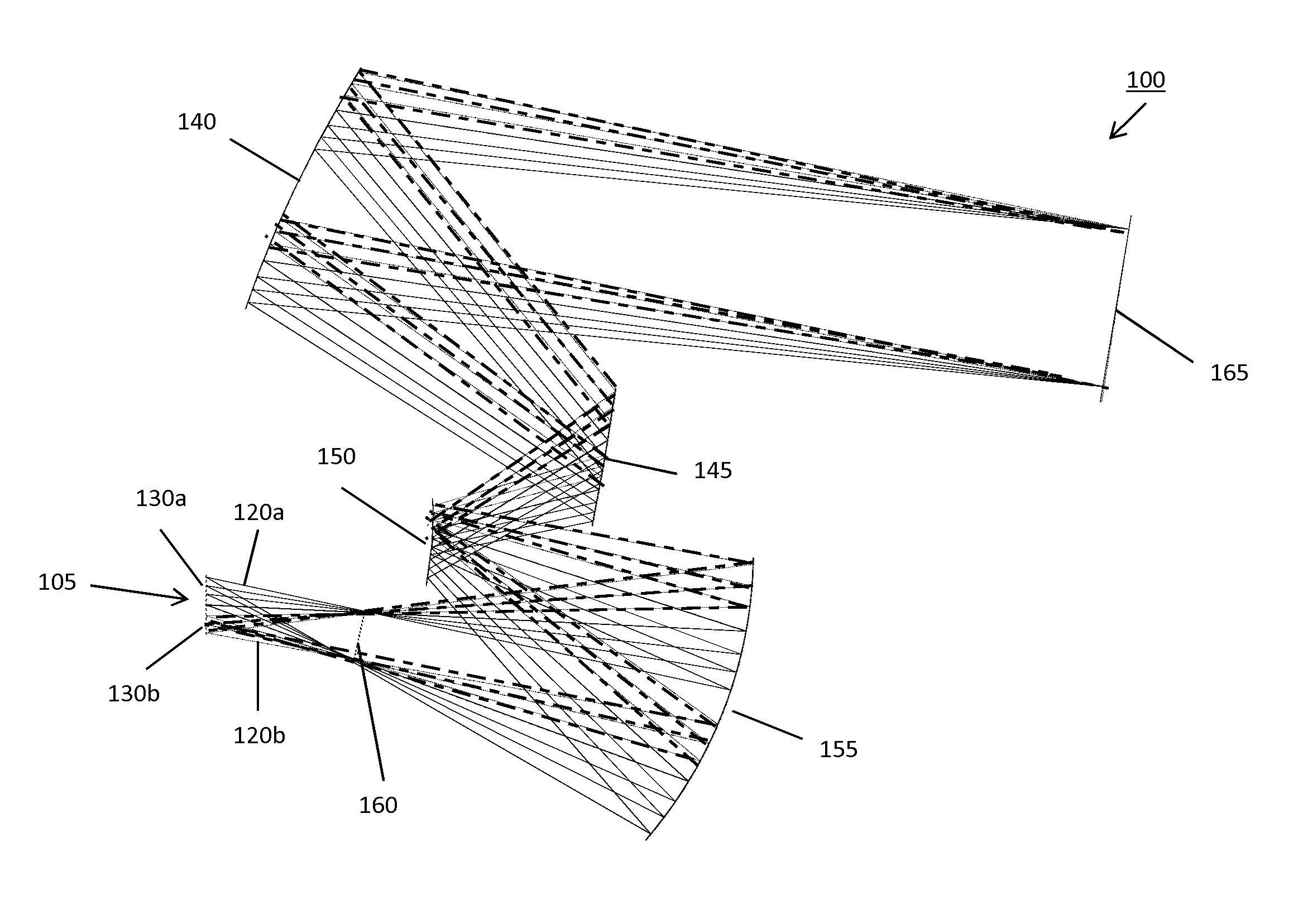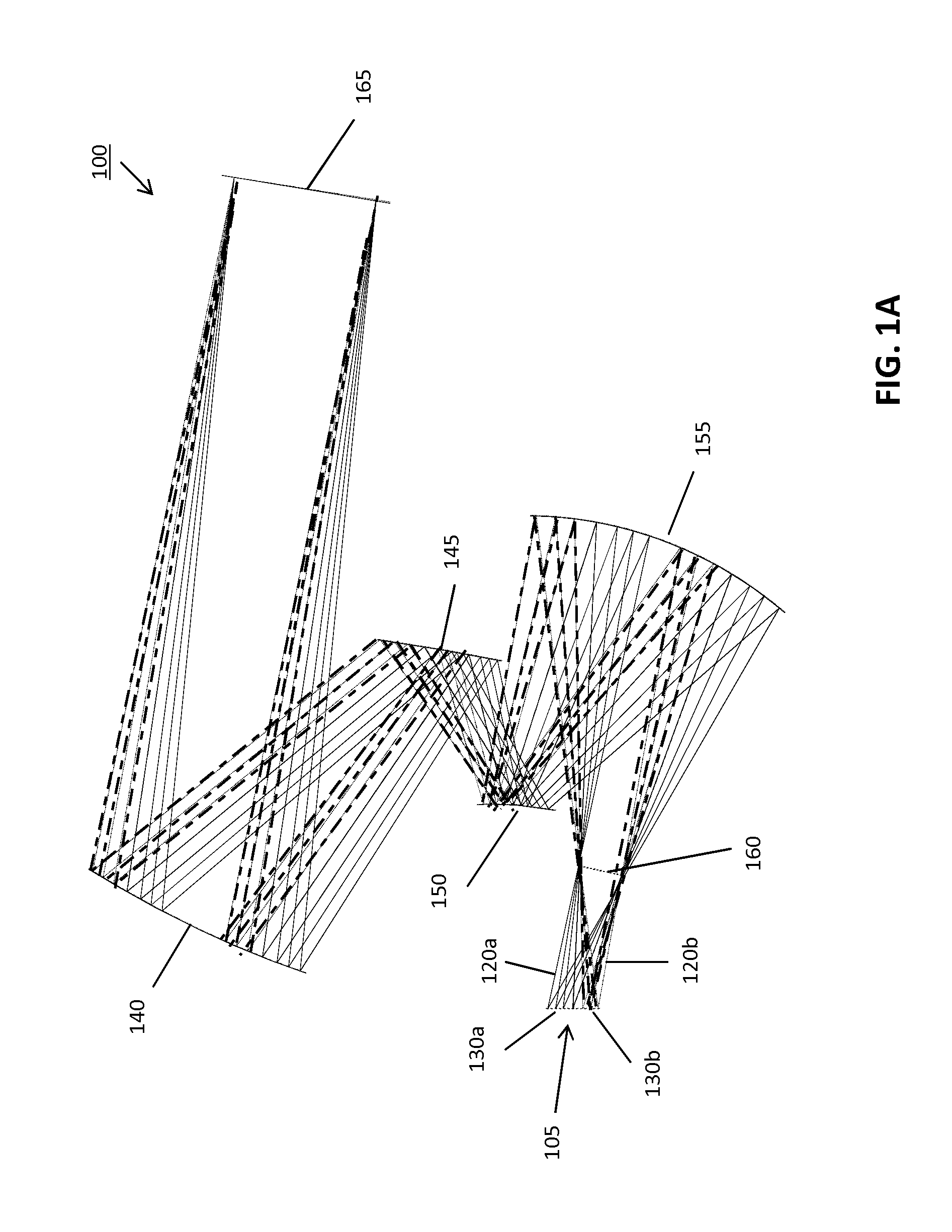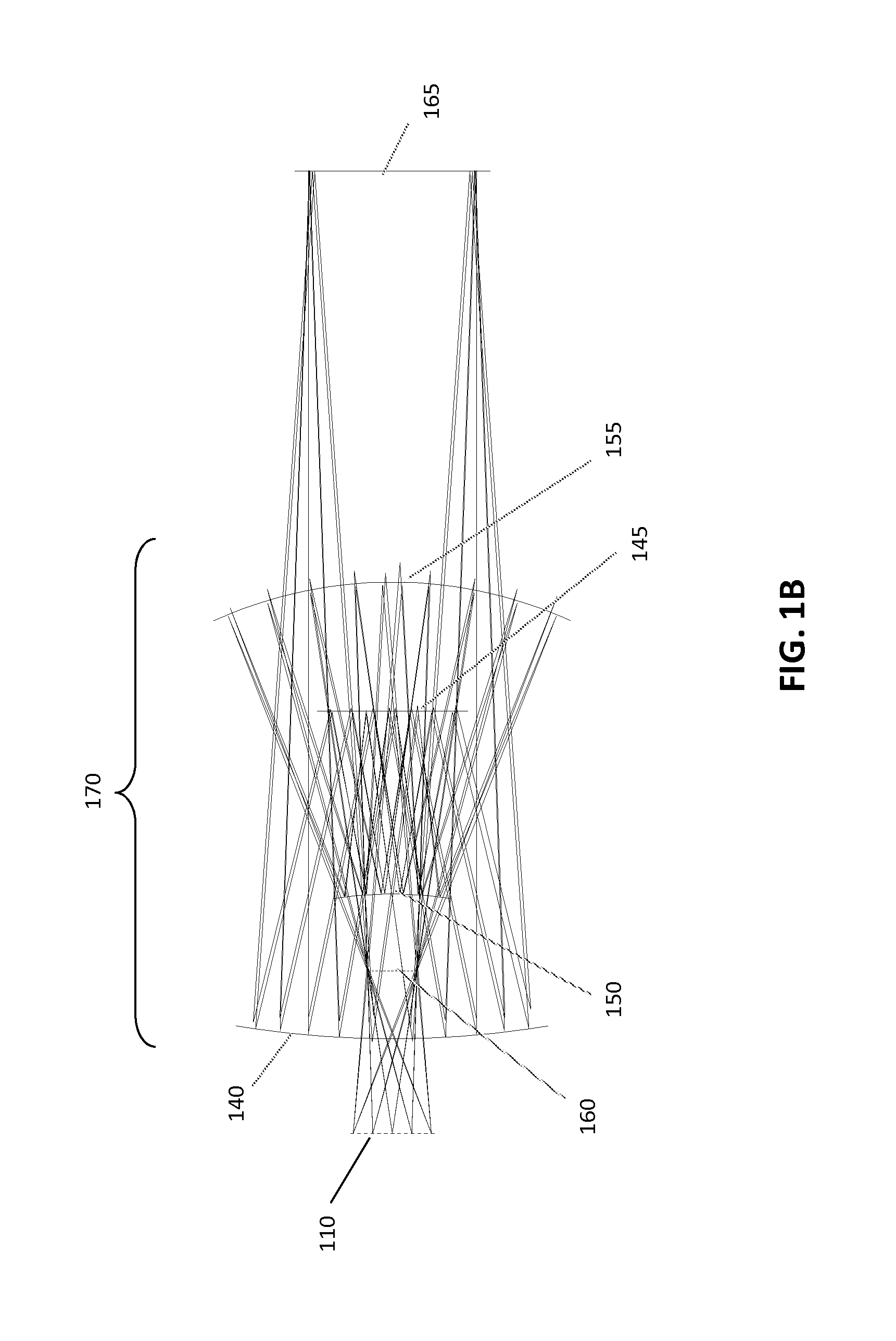Optical forms for multi-channel double-pass dispersive spectrometers
- Summary
- Abstract
- Description
- Claims
- Application Information
AI Technical Summary
Benefits of technology
Problems solved by technology
Method used
Image
Examples
Embodiment Construction
[0022]Aspects and embodiments are directed to the use of relayed optical form, such as a four-mirror anastigmat (4MA) or five-mirror anastigmat (5MA) in double-pass, multi-channel, dispersive imaging spectrometers. The 4MA or 5MA optical forms disclosed and used herein are all-reflective and flat-field, and provide a real entrance pupil, as discussed further below. U.S. Pat. No. 5,550,672 discloses examples of the structural and functional characteristics of the 4MA optical form in detail. Similarly, U.S. Pat. No. 6,902,282 discloses examples of the structural and functional characteristics of the 5MA optical form in detail. The relayed nature of the 4MA and 5MA optical forms provides the advantage of allowing for ambient optics for infrared applications; a significant benefit over conventional non-reimaging optical forms, such as the reflective triplet. In addition, as discussed further below, the additional mirrors included in the 4MA and 5MA optical forms relative to the reflecti...
PUM
 Login to View More
Login to View More Abstract
Description
Claims
Application Information
 Login to View More
Login to View More - R&D
- Intellectual Property
- Life Sciences
- Materials
- Tech Scout
- Unparalleled Data Quality
- Higher Quality Content
- 60% Fewer Hallucinations
Browse by: Latest US Patents, China's latest patents, Technical Efficacy Thesaurus, Application Domain, Technology Topic, Popular Technical Reports.
© 2025 PatSnap. All rights reserved.Legal|Privacy policy|Modern Slavery Act Transparency Statement|Sitemap|About US| Contact US: help@patsnap.com



